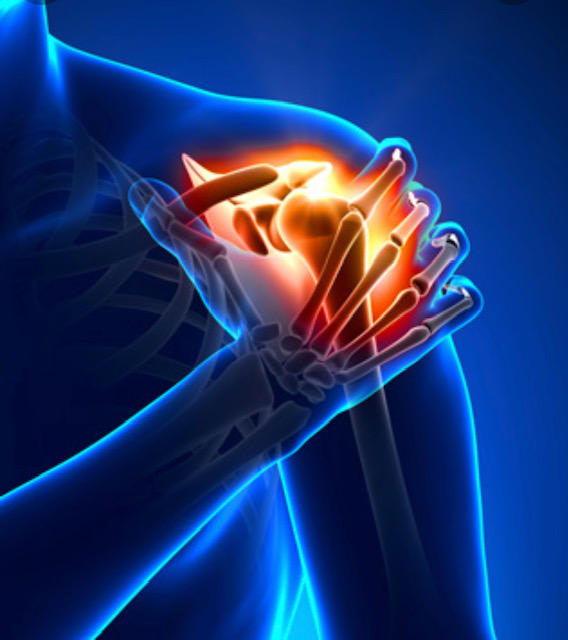
My first question when I evaluate my patient’s shoulder is… Can you sleep on your shoulder? This question helps me determine if the patient’s shoulder capsule is swollen. There are many reasons why a person develops shoulder pain but knowing the mechanism of the injury helps to narrow the diagnosis. You might injure it in a fall or accident, or you could have overdone a chore like painting. Sometimes shoulder pain comes from a condition like arthritis. If your shoulder pain started after trauma like a fall a special study might be indicated. The pain may come more gradual and then it progresses rapidly to the point of very limited motion. We sometime refer to this as frozen shoulder or medically known as adhesive capsulitis.
I often see patients develop minimal pain in the front of their shoulder as they perform task such as weight lifting. This pain may naturally subside due to slight bursa inflammation or as we call it bursitis. However, if the pain becomes worse with activity there may be slight connective tissue or scar tissue causing increase friction. The progression of symptoms for some patients can range. I have patients that develop only achiness and then it goes away for awhile and pops up from time to time.
Generally this may indication that there is mild scar tissue formation. But I also have patients that can’t move their should overnight with no real history of injury. This can be a mystery, however, I would guess that 90% of these patients did a task the day before that placed the shoulder in a compromised position. If you are noticing your shoulder pain in not going away it is important to come in and get appropriate care so that the injury does not progress into something that requires more invasive treatment options.
Personally I find that once I examine the patient and diagnosis the injury a bit of relief is seen on their face because the unknown was scary. More often than not the shoulder injury is easily resolved with applying a sports medicine protocol in just a few sessions. Although every injury has a little different presentation we can apply the concepts in a direct way to help the patient understand the mechanism of the injury as well as develop a treatment plan that is tailored for their needs. This may involve soft tissue work, ultrasound, myofascial release, electrical stimulation, cryotherapy (GameReady), and corrective exercises. If you are suffering from nagging shoulder pain don’t hesitate to make an appointment by pressing the tab above. I look for forward in helping you get back to your game!



 Are you ready for the latest in rehabilitative technology? Professional athletes are now using SAM Sport with their injury recovery and seeing staggering results. As a healthcare provider, I am always evaluating the latest and greatest in sports recovery and rehabilitation. I typically look at new products with a little skepticism but this product caught my eye.
Are you ready for the latest in rehabilitative technology? Professional athletes are now using SAM Sport with their injury recovery and seeing staggering results. As a healthcare provider, I am always evaluating the latest and greatest in sports recovery and rehabilitation. I typically look at new products with a little skepticism but this product caught my eye.